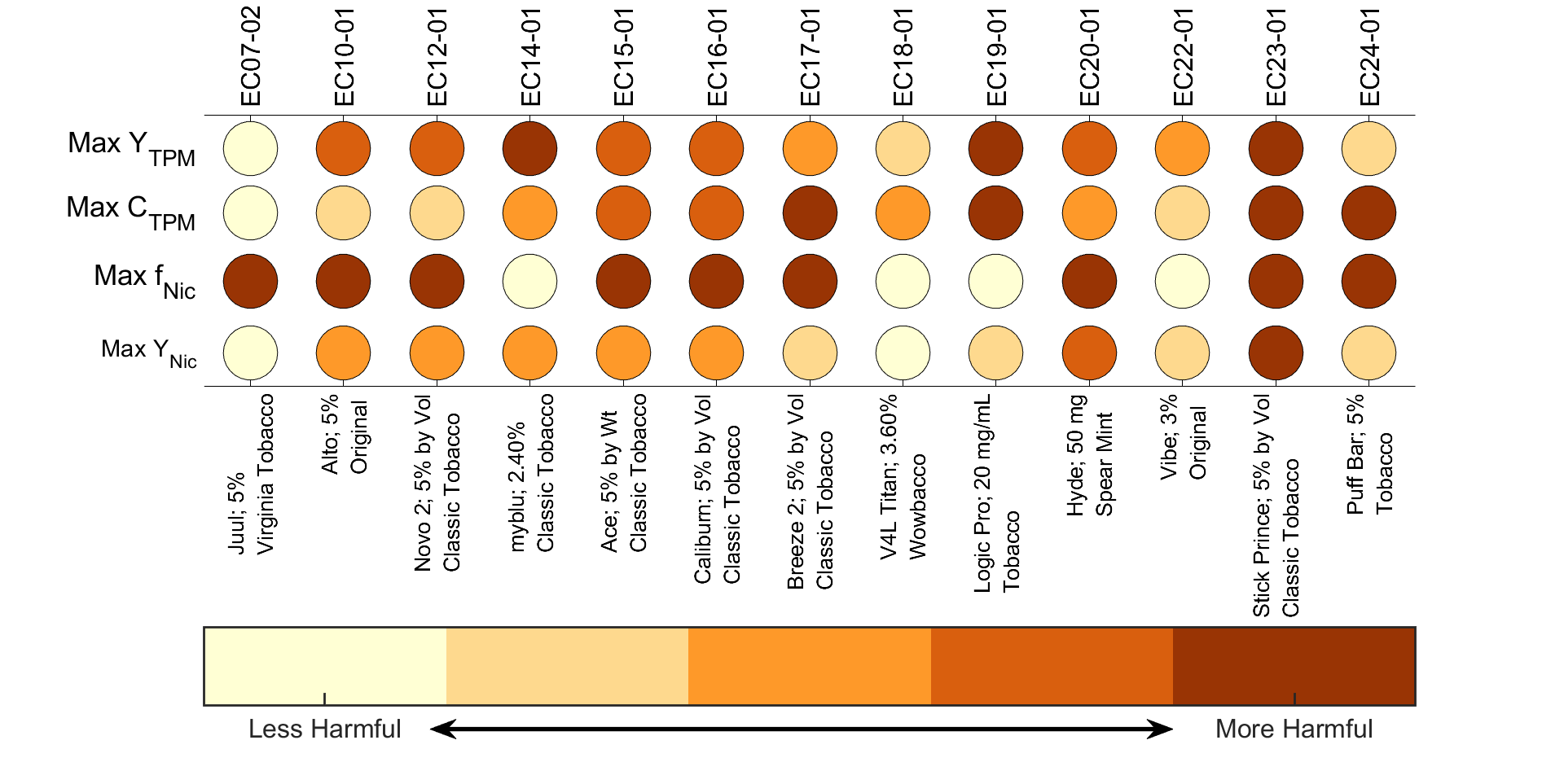This study introduces and demonstrates a comprehensive, accurate, unbiased approach to robust quantitative comparison of Electronic Nicotine Delivery Systems (ENDS) appropriate for establishing substantial equivalence (or lack thereof) between tobacco products. The approach is demonstrated across a family of thirteen pen- and pod-style ENDS products. Methods employed consist of formulating a robust emissions surface regression model, quantifying the empirical accuracy of the model as applied to each product, evaluating relationships between product design characteristics and maximum emissions characteristics, and presenting results in formats useful to researchers, regulators, and consumers. Results provide a response surface to characterize emissions (total particulate matter and constituents thereof) from each ENDS appropriate for use in a computer model and for conducting quantitative exposure comparisons between products. Results demonstrate that emissions vary as a function of puff duration, flow rate, E-Liquid composition, and device operating power. Further, results indicate that regulating design characteristics of ENDS devices and consumables may not achieve desired public health outcomes; it is more effective to regulate maximum permissible emissions directly. Three emissions outcome measures (yield per puff, mass concentration and constituent mass ratio) are recommended for adoption as standard quantities for reporting by manufacturers and research laboratories. The approach provides a means of (a) quantifying and comparing maximal emissions from ENDS products spanning their entire operating envelope, (b) comparative evaluation of ENDS devices and consumable design characteristics, and (c) establishing comparative equivalence of maximal emissions from ENDS. A consumer-oriented product emissions dashboard is proposed for comparative evaluation of ENDS exposure potential. Maximum achievable power dissipated in the coil of ENDS is identified as a potentially effective regulatory parameter.

